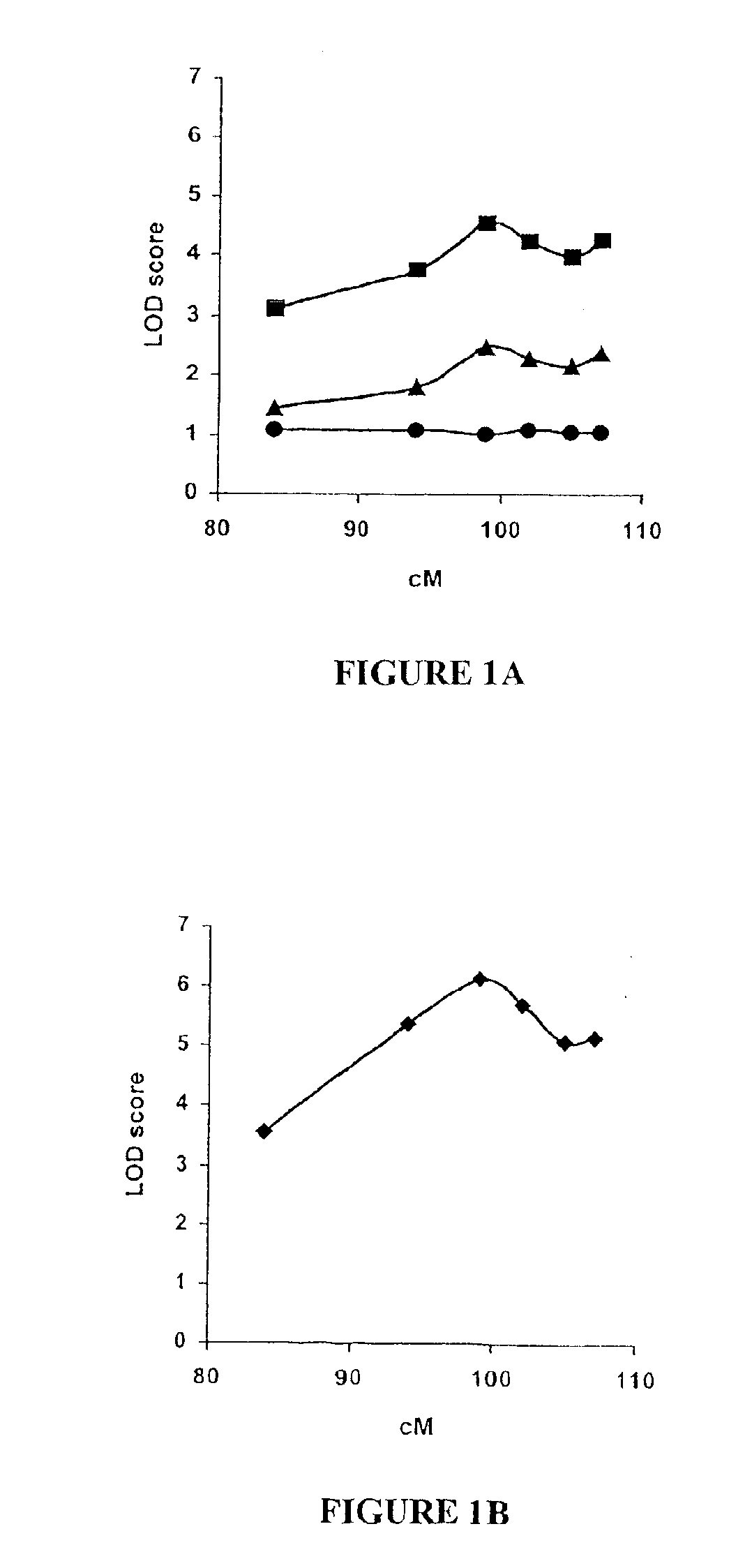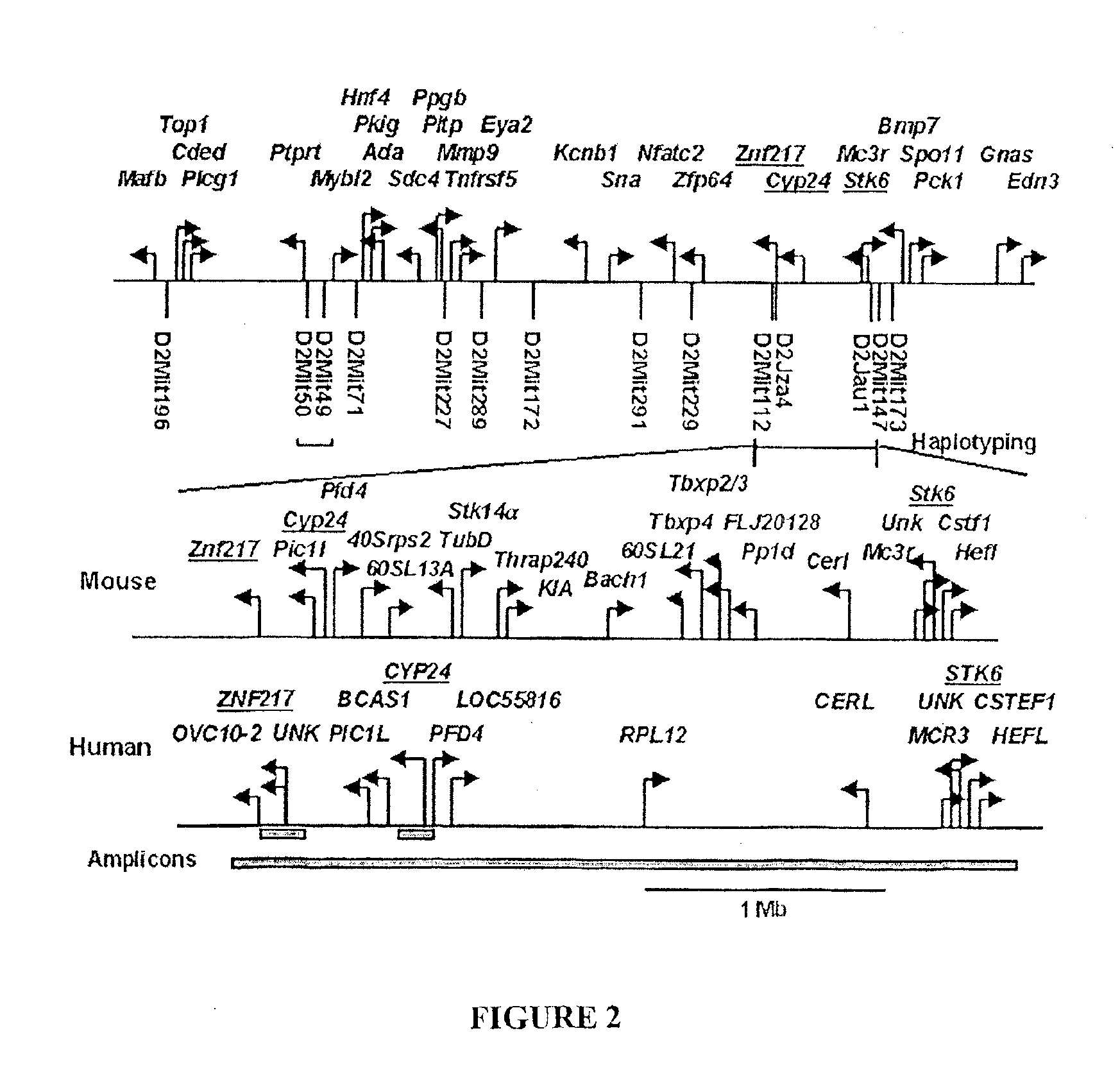STK15 (STK6) gene polymorphism and methods of determining cancer risk
a gene polymorphism and cancer risk technology, applied in the field of stk15 (stk6) gene polymorphism and methods of determining cancer risk, can solve the problems of insufficient information regarding the variability of the genome among individuals, the identification of low-penetration tumor susceptibility genes is difficult using standard methods, and accounts only for a small portion of cancer risk
- Summary
- Abstract
- Description
- Claims
- Application Information
AI Technical Summary
Benefits of technology
Problems solved by technology
Method used
Image
Examples
example 2
Expression and Amplification Analysis of STK15 (STK6)
This example provides further evidence that STK15 (STK6) is a low penetrance tumor susceptibility gene by illustrating that the STK6 allele of the more tumor-prone mus musculus is amplified more frequently, and expressed at higher levels than the STK6 allele of the less tumor prone mus spretus. Furthermore, the experiments described herein identify allele-specific amplification of STK15 (STK6).
Allele Specific Expression and Allele Specific Amplification Assays. Allele specific expression and allelic specific amplification was measured using the ABI PRISM 7700 sequence detection system (Applied Biosystems). Amplification conditions and reactions were as described above, except that PCR reactions for allele specific expression (50 ml) contained 50 ng reverse transcribed RNA or 50 ng genomic DNA. Normal colon mucosal DNA and colon tumor DNA for allelic specific amplification studies was amplified by whole genome amplification prior t...
PUM
| Property | Measurement | Unit |
|---|---|---|
| genotype frequencies | aaaaa | aaaaa |
| physical maps | aaaaa | aaaaa |
| TaqMan.TM | aaaaa | aaaaa |
Abstract
Description
Claims
Application Information
 Login to View More
Login to View More - R&D
- Intellectual Property
- Life Sciences
- Materials
- Tech Scout
- Unparalleled Data Quality
- Higher Quality Content
- 60% Fewer Hallucinations
Browse by: Latest US Patents, China's latest patents, Technical Efficacy Thesaurus, Application Domain, Technology Topic, Popular Technical Reports.
© 2025 PatSnap. All rights reserved.Legal|Privacy policy|Modern Slavery Act Transparency Statement|Sitemap|About US| Contact US: help@patsnap.com



